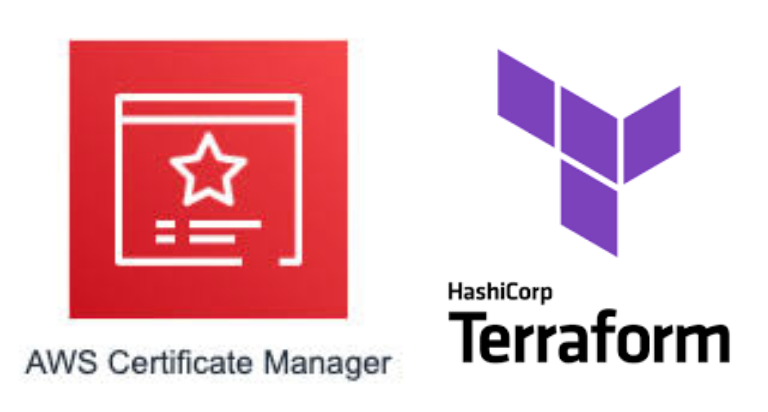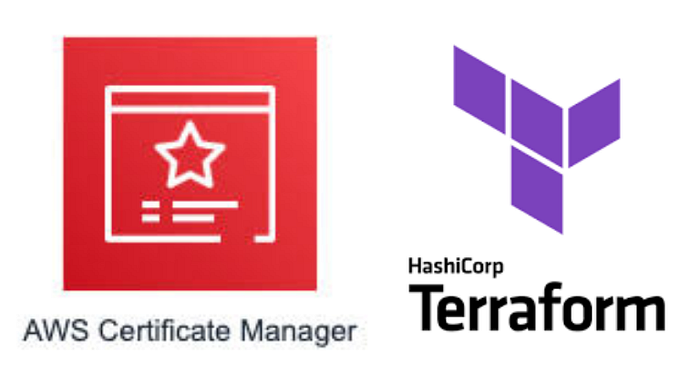Deploying AWS Certificate Manager (ACM) with Terraform
 Mahira Technology Private Limited
Mahira Technology Private Limited

Introduction:
#AWS Certificate Manager (ACM) is a fully managed service that makes it easy to provision, manage, and deploy SSL/TLS certificates for your applications running on AWS. With Terraform, an infrastructure-as-code tool, you can automate the provisioning and configuration of #ACM resources. By the end of this tutorial, you’ll have a solid understanding of how to secure your applications with SSL/TLS certificates using ACM and Terraform.
Prerequisites :-
Before we begin, ensure you have the following prerequisites:
An AWS account with appropriate permissions to create ACM resources.
#Terraform installed on your local machine.
#AWS CLI configured with your AWS credentials.
Step 1: Setting Up Your Terraform Configuration Files Create three files: main.tf, variable.tf, and output.tf . Open your preferred text editor and create these files.
Step 2: Writing the #Terraform Code Now, let’s dive into the main.tf file and start writing our Terraform code. In this file, we'll configure the #AWS provider and define the #ACM resources required for our deployment. Here's an example of how you can define the ACM certificate:
provider "aws" {
region = "us-east-1" # Replace with your desired AWS region
}
resource "aws_acm_certificate" "my_certificate" {
domain_name = var.domain_name
validation_method = var.validation_method
lifecycle {
create_before_destroy = true
}
}
Step 4: Defining Input Variables In the variable.tf file, define the input variables needed for your #ACM deployment. These variables will allow you to customize your ACM setup based on your domain requirements. Here's an example of how you can define some essential variables:
variable "domain_name" {
description = "Domain name for which ACM certificate will be issued"
type = string
}
variable "validation_method" {
description = "Method for validating the ACM certificate (DNS or EMAIL)"
type = string
}
# Add any additional variables as needed
Step 5: Defining Outputs In the output.tf file, define the outputs you want to retrieve after deploying the #ACM resources. These outputs can include information such as the ARN of the issued certificate or any other relevant details.
output "certificate_arn" {
value = aws_acm_certificate.my_certificate.arn
}
# Add any additional outputs as needed
Step 6: Deploying ACM Resources Now that we have defined our Terraform code, it’s time to deploy our #ACM resources. Follow these steps:
Open a terminal or command prompt and navigate to the directory where your #Terraform files are located.
Run the following command to initialise the #Terraform configuration:
terraform init
This command downloads the necessary provider plugins and sets up the backend for storing the #Terraform state.
- Next, run the command to validate the #Terraform configuration:
terraform validate
This command ensures that the syntax and structure of your #Terraform code are correct.
- Run the following command to see the execution plan and confirm the resources that #Terraform will create:
terraform plan
Review the plan to ensure that it aligns with your expectations. It will show you the changes that Terraform will make to create or modify resources.
- If the plan looks good, proceed to apply the changes by running the following command:
terraform apply
You will be prompted to confirm the deployment. Type “yes” and press Enter to proceed.
- #Terraform will now create the #ACM resources based on your configuration. This process may take a few moments. Once completed, you will see the outputs defined in the output.tf file, such as the ARN of the issued certificate.
Congratulations! You have successfully deployed #ACM resources using Terraform.
Step 7: Cleaning Up (Optional) If you want to remove the deployed #ACM resources and destroy the infrastructure, follow these steps:
- In the same terminal or command prompt, run the following command:
terraform destroy
You will be prompted to confirm the destruction of the resources. Type “yes” and press Enter to proceed.
- #Terraform will destroy the #ACM resources and any other resources defined in your Terraform configuration.
Conclusion:
In this guide, we learned how to deploy #ACM resources using #Terraform. By following the step-by-step instructions, you gained the ability to automate the provisioning of SSL/TLS certificates for your applications using #ACM and #Terraform. #ACM simplifies the certificate management process, while #Terraform provides an infrastructure-as-code approach for consistent and repeatable deployments.
Subscribe to my newsletter
Read articles from Mahira Technology Private Limited directly inside your inbox. Subscribe to the newsletter, and don't miss out.
Written by

Mahira Technology Private Limited
Mahira Technology Private Limited
A leading tech consulting firm specializing in innovative solutions. Experts in cloud, DevOps, automation, data analytics & more. Trusted technology partner.